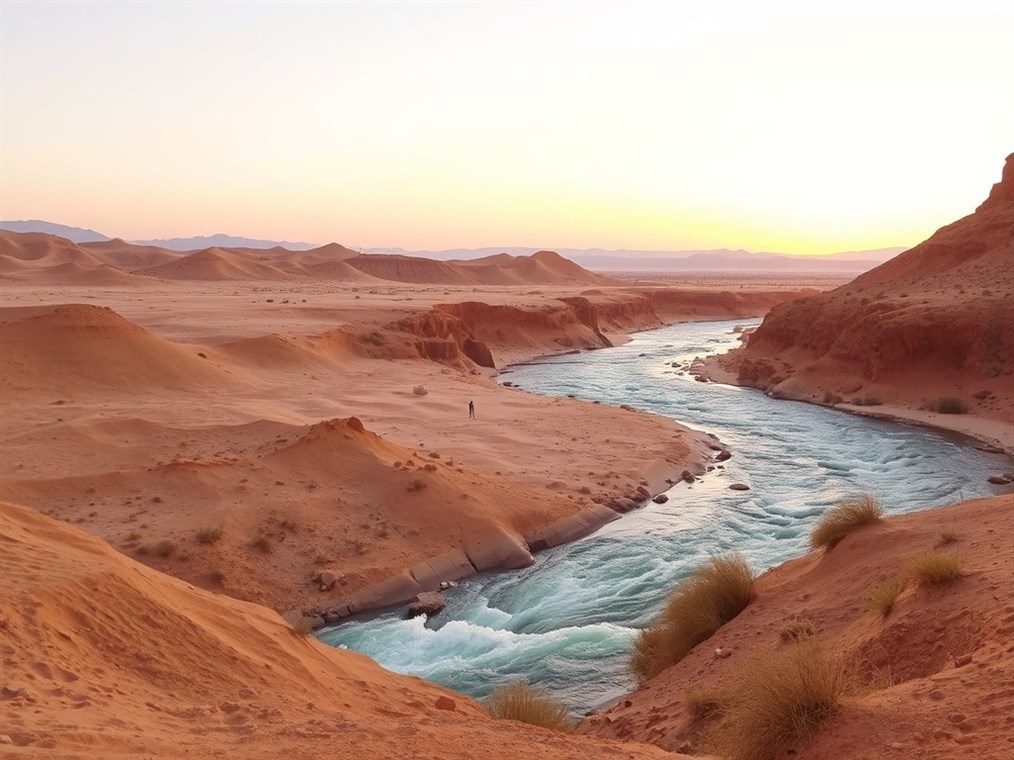
Where Does the Water in Whitewater, CA <em>Really</em> Come From?
FactsWhere Does the Water in Whitewater, CA Really Come From?
Whitewater, California. The name conjures up images of wild, rushing rivers, doesn’t it? But here’s the thing: living in a desert changes your perspective on water. While the name might suggest an abundance, the reality of where Whitewater gets its water is a bit more… involved. It’s not as simple as just turning on the tap.
To really understand where Whitewater’s water comes from, you have to zoom out and look at the whole Coachella Valley. And trust me, it’s a fascinating story of smart water management.
The Coachella Valley, which includes Whitewater, relies on a mixed bag of water sources to keep everything running – from homes and businesses to farms and those lush golf courses. The Coachella Valley Water District (CVWD) is the big boss in charge of managing all this. So, what’s in their water toolkit?
First up: Groundwater. This is the big one. Think of it as the valley’s savings account. The groundwater basin, or aquifer, is basically a massive underground reservoir. Someone once described it to me as a “tilted bathtub filled with sand and gravel,” which is surprisingly accurate! Water just fills all the gaps. We’re talking wells that go down as far as 1,300 feet to tap into this stuff. The Whitewater River subbasin, a huge area covering nearly 400 square miles, is the main storage area for the Coachella Valley’s groundwater.
Next, we have imported water from the mighty Colorado River. This is a workhorse, mainly used for watering crops and refilling that precious groundwater supply. It travels a long way – 123 miles, to be exact – via the Coachella Canal, which is connected to the All-American Canal. Fun fact: the CVWD secured the right to use Colorado River water way back in 1931!
Then there’s imported water from the State Water Project. This stuff originates way up north in California. Sometimes, they even swap this water for Colorado River water to help replenish the aquifer. It’s all part of the balancing act.
And let’s not forget recycled water. This is a smart move. Treated wastewater is used to irrigate some of the valley’s golf courses, which frees up more groundwater for other uses. Every little bit helps, right?
Now, about that Whitewater River… It does play a role! It starts high up in the San Bernardino Mountains as snowmelt, rushes through the Whitewater Canyon, and eventually helps to recharge the Coachella Valley aquifer. The name actually comes from the milky look of the water, caused by sediments.
But here’s the catch: the Whitewater River isn’t always a raging torrent. Like any desert river, it’s vulnerable to drought. I’ve seen it bone-dry during long dry spells, with the water flowing hidden beneath the surface. Plus, with more people moving to desert cities, the increased demand for water and potential for pollution puts a strain on the whole watershed.
That’s why groundwater replenishment is so important. The CVWD is constantly working to keep that underground “bathtub” full. The Whitewater River Groundwater Replenishment Facility is a key piece of this puzzle. It can recharge up to 511,000 acre-feet of water a year from the Colorado River. That’s enough drinking water for about 300,000 people in the Coachella Valley!
The good news is that the groundwater we pump up is generally pretty clean. It often needs little to no treatment to meet all the health standards. Usually, just a touch of chlorine is added as a precaution. The CVWD has a network of wells and reservoirs to get this water where it needs to go.
Looking ahead, the Coachella Valley – and Whitewater – faces some serious challenges. Population growth, climate change, and the ever-present threat of drought mean we need to be smarter than ever about water. Continued investment in refilling the groundwater, water conservation, and finding new water sources will be essential to making sure the water keeps flowing for generations to come. It’s a desert, after all, and water is life.
You may also like
Disclaimer
Categories
- Climate & Climate Zones
- Data & Analysis
- Earth Science
- Energy & Resources
- Facts
- General Knowledge & Education
- Geology & Landform
- Hiking & Activities
- Historical Aspects
- Human Impact
- Modeling & Prediction
- Natural Environments
- Outdoor Gear
- Polar & Ice Regions
- Regional Specifics
- Review
- Safety & Hazards
- Software & Programming
- Space & Navigation
- Storage
- Water Bodies
- Weather & Forecasts
- Wildlife & Biology
New Posts
- Diving Deep into Tangerine: More Than Just a Sunny Locale
- Jamaica Backpack Daypack Pockets Shopping – Review
- TEOYETTSF Climbing Backpack Multifunction Military – Buying Guide
- The Curious Case of Cavendish’s Classroom: Where Did This Science Star Study?
- Dragon Backpack Insulated Shoulder Daypack – Buying Guide
- ROCKY Hi-Wire Western Boots: A Rugged Review After a Month on the Ranch
- Vertical Curbs: More Than Just Concrete Barriers
- Regatta Modern Mens Amble Boots – Honest Review
- YMGSCC Microfiber Leather Sandals: Beach to Boardwalk, Did They Hold Up?
- Tangier: More Than Just a Backdrop in “Tangerine”
- DJUETRUI Water Shoes: Dive In or Doggy Paddle? A Hands-On Review
- Barefoot Yellow Pattern Hiking 12women – Is It Worth Buying?
- Koa Trees: How Fast Do These Hawaiian Giants Really Grow?
- DDTKLSNV Bucket Hat: Is This Packable Sun Shield Worth the Hype?